LinkedIn Sales Prospecting Made Delightfully Simple: 21 Game-Changing Steps for Beginners 🚀
LinkedIn sales prospecting can feel overwhelming when you’re new. This guide breaks everything into practical steps you can apply today, even if your profile is bare and your pipeline is empty. You’ll learn how to set up a solid foundation, find and prioritize leads with Sales Navigator tips, craft messages that get replies, and build a repeatable social selling for beginners workflow that fits into a busy day.
We’ll keep it friendly, simple, and actionable. Short paragraphs, lots of examples, and zero jargon soup. By the end, you’ll have a playbook you can use every day to start better conversations and book more meetings—without feeling spammy.
Table of Contents
- 🎯 What “LinkedIn Sales Prospecting” Actually Means (and Why It Works)
- 🧱 Build Your Foundation: Profile, ICP & Goals
- 🕵️♀️ Smarter Searches: Sales Navigator Tips That Save Hours
- ⏱️ Fast vs. Slow Prospecting: How to Balance Both for Wins
- 🔗 Warm Paths Beat Cold Pitches: Social Proximity & “Best Path In”
- ✉️ Messages That Earn Replies: Hooks, Relevance, and the Simple Ask
- 🔄 Multi-Channel Sequences: Email, Phone, InMail & LinkedIn DM Together
- 🧠 Content That Attracts Buyers: Algorithm-Friendly (Without the Hype)
- 🗓️ Your 60-Minute Daily Prospecting Routine
- 🧰 Tools That Multiply Your Effort (Free & Paid)
- 🧯 Common Mistakes Beginners Make—and Easy Fixes
- 📊 Metrics That Actually Matter (So You Improve Weekly)
- 📝 Key Lessons & Takeaways
🎯 What “LinkedIn Sales Prospecting” Actually Means (and Why It Works)
When you first hear LinkedIn sales prospecting, it might sound intimidating or like another piece of sales jargon. But let’s break it down in plain English: it’s simply the process of using LinkedIn to identify potential customers, connect with them, and start conversations that may eventually lead to business opportunities. Think of it as a modern version of door-to-door selling—except the “doors” are professional profiles, and you can choose which ones to knock on.
Unlike traditional cold calls, where you often interrupt strangers, LinkedIn prospecting allows you to reach out with context. Every profile is a mini-story about a person’s professional journey. Their title, experience, posts, and even the companies they follow all tell you what matters to them. This gives you a unique chance to make your outreach personal and timely rather than generic.
Why LinkedIn Is So Effective for Prospecting
There are four main reasons why beginners (and pros) find LinkedIn such a powerful sales tool:
- It’s a live, self-updating database
Unlike static spreadsheets or purchased contact lists, LinkedIn is updated by users themselves. That means when someone changes jobs, earns a promotion, or joins a new company, you see it almost instantly. - Built-in context for outreach
Traditional cold calls lack context—you don’t know what the person cares about. LinkedIn gives you their recent posts, company updates, and career path. That allows you to craft messages that resonate. - Warm introductions beat cold pitches
You don’t always have to go in cold. With LinkedIn, you can leverage mutual connections, shared groups, or alumni networks to create a warmer entry point. - Professional setting
Unlike Facebook or Instagram, LinkedIn is designed for work-related conversations. People expect to discuss opportunities, tools, and growth, so your outreach doesn’t feel out of place.
Imagine walking into a conference where everyone wears a badge listing their role, company, and interests. That’s LinkedIn—but instead of a one-day event, it’s happening all year long.
The Core Cycle of LinkedIn Sales Prospecting
To make things more concrete, here’s a simple beginner-friendly cycle you can repeat daily:
- Find potential leads that match your Ideal Customer Profile (ICP).
- Engage with light touches—follow them, like a post, or leave a thoughtful comment.
- Connect with a short, personalized note.
- Start a useful conversation based on their goals or challenges.
- Nurture the relationship until the timing is right for a business chat.
The beauty of LinkedIn prospecting is that it rewards consistency more than intensity. Small daily actions compound into a strong pipeline over time.
🧱 Build Your Foundation: Profile, ICP & Goals
Before you start reaching out, you need to build a strong foundation. Think of it as preparing your store before opening day. If your LinkedIn profile doesn’t inspire trust, or if you don’t know exactly who you’re trying to reach, your efforts will fall flat.
Step 1: Define Clear Goals
A beginner mistake is jumping in without knowing what “success” means. For your first 90 days, set specific, measurable goals such as:
- Book 15 first meetings with qualified prospects.
- Grow your network by 100 targeted connections.
- Start at least 5 meaningful conversations per week.
Clarity matters. These goals guide your activity and prevent you from wasting time chasing likes or connections that don’t convert.
Step 2: Identify Your ICP (Ideal Customer Profile)
Your ICP defines the type of companies you want to target. Without it, you’ll get distracted by titles that look fancy but aren’t relevant. Break it down by:
- Industry (e.g., SaaS, manufacturing, healthcare).
- Company size (startups, mid-market, enterprise).
- Region (local, national, international).
- Technology stack (e.g., Salesforce, HubSpot, Shopify).
- Growth stage (seed, Series A, established).
Example ICP: Mid-market SaaS companies in North America with 50–200 employees, using Salesforce and HubSpot, currently building their sales teams.
Step 3: Build Buyer Personas
Within those companies, who should you talk to? That’s where personas come in. Personas describe the individuals who feel the pain you solve. For each one, jot down:
- Title (VP of Sales, Head of Marketing, RevOps Manager).
- Key responsibilities (e.g., pipeline forecasting, campaign ROI).
- Challenges (manual reporting, low lead-to-customer conversion).
- Success measures (revenue growth, faster onboarding).
Example Persona: “VP of Sales responsible for building predictable pipeline, frustrated with poor forecast accuracy, measured by hitting quarterly targets.”
Step 4: Optimize Your LinkedIn Profile
Think of your LinkedIn profile as your landing page. Every prospect you contact will check it before replying. Make sure it signals credibility and value:
- Headline: Go beyond “Account Executive at X.” Try: “Helping SaaS RevOps leaders improve forecast accuracy with data-driven insights.”
- Banner image: Use a simple line that highlights what you do (e.g., “We help B2B teams cut churn by 25%”).
- About section: Tell a short story. Mention the problem, how you help, and proof that it works. Keep it conversational.
- Featured section: Add a case study, a short explainer video, or a PDF checklist. Give people something to explore.
- Experience: Highlight results instead of duties. For example: “Helped clients increase win rates by 18% through forecasting automation.”
- Contact details: Make it easy to reach you. Add a Calendly link or email.
Pro Tip: Use keywords naturally throughout your profile that your ICP might search for, such as “pipeline forecasting,” “sales enablement,” or “RevOps analytics.”
Step 5: Create a Daily Routine
Prospecting success doesn’t come from one big push. It comes from small, repeated actions. Try this 60-minute daily routine:
- 10 minutes: Check saved searches for new leads or job changes.
- 25 minutes: Send 5–8 personalized outreach messages.
- 10 minutes: Follow up with earlier prospects.
- 10 minutes: Leave thoughtful comments on posts from people in your ICP.
- 5 minutes: Log activity and track what worked.
This structure keeps you consistent while leaving time for other responsibilities.
🕵️♀️ Smarter Searches: Sales Navigator Tips That Save Hours
One of the most overwhelming parts for beginners on LinkedIn is figuring out how to find the right people without wasting hours scrolling. This is where Sales Navigator becomes your best friend. Think of it as a supercharged search engine layered on top of LinkedIn. While the free version allows basic searches, Sales Navigator adds filters, alerts, and recommendations that make prospecting far more targeted and efficient.
If you’ve ever tried typing a generic job title into the search bar and ended up with thousands of irrelevant results, you’ll immediately see the value here. Done right, Sales Navigator turns a firehose into a clear, focused stream of leads who match your Ideal Customer Profile (ICP). Let’s break it down in a beginner-friendly way.
Start with a Seed List
Don’t try to boil the ocean. Instead of searching the entire LinkedIn universe, start small. Pick 10–20 companies that fit your ICP and add them as “Accounts” in Sales Navigator. This seed list acts like a compass—it keeps you focused and filters the noise.
Once you have these accounts saved, LinkedIn will notify you when:
- Someone at that company changes roles.
- A new person joins who fits your target persona.
- They share content or company updates.
This “auto-feed” saves you hours of manual checking.
Use Advanced Filters Like a Pro
Sales Navigator offers more than 20 filters, but you don’t need them all at once. Start with these core ones:
- Company headcount: Useful to match your ICP size.
- Geography: Narrow to your region or market.
- Industry: Keep it tight to avoid irrelevant results.
- Seniority level: Filter for decision-makers vs. influencers.
- Job change in the last 90 days: One of the most powerful—new leaders are more open to fresh ideas.
Pro Tip: Combine filters to target both company-level and person-level traits. Example: “VP of Sales” in SaaS companies with 200–500 employees in North America who changed jobs in the past 90 days. That kind of search produces a goldmine.
Boolean Searches Without the Headache
Boolean operators help refine searches, but many beginners overcomplicate them. Here’s a simple formula:
("VP of Sales" OR "Head of Sales" OR "Sales Director")
AND ("SaaS" OR "Technology")
AND "United States"
NOT "Marketing"
This way you cast a wide net without catching irrelevant roles. Save your best Boolean strings for quick reuse.
Save Searches & Set Alerts
This is where the magic happens. Once you build a smart search, don’t repeat it every day. Save it and let LinkedIn do the heavy lifting. Sales Navigator will automatically show you new matches, people who recently engaged with content, or accounts experiencing changes.
Think of it like planting seeds and letting LinkedIn water them for you. Your job is just to check the notifications and act quickly.
Prioritize Warm Paths
Before reaching out cold, check the “Best Path In” feature. It shows you whether teammates, alumni, or mutual connections can make an introduction. A warm path often doubles your reply rate compared to cold outreach.
⏱️ Fast vs. Slow Prospecting: How to Balance Both for Wins
Once you’ve nailed your searches, the next challenge is balancing short-term wins with long-term relationship building. Beginners often lean too heavily in one direction: either spamming lots of cold messages (fast but unsustainable) or endlessly commenting and posting without asking for meetings (slow but not moving the needle). The truth is, you need both.
Fast Prospecting (Direct Outreach)
This is all about quick conversations and meetings now. Examples:
- Sending direct messages to decision-makers.
- Writing short, relevant emails.
- Making follow-up calls.
- Using InMail when you can’t connect directly.
Fast prospecting is like fishing with a spear: you’re targeting specific prospects and hoping for immediate bites.
Best practices for fast outreach:
- Personalize the first two sentences (reference a post, role change, or company news).
- Keep messages under 120 words.
- Make a single, clear ask (like a 15-minute chat).
- Follow up 2–3 times across different channels.
Slow Prospecting (Trust Building)
This is the long game—building visibility and authority so prospects come to you when ready. Activities include:
- Posting short, helpful LinkedIn content.
- Commenting thoughtfully on target prospects’ posts.
- Joining and participating in industry groups.
- Sharing relevant resources (guides, checklists, case studies).
Slow prospecting is like farming: you plant seeds and let them grow over weeks or months.
Why it matters: People rarely buy on the first touch. Familiarity makes future outreach feel natural, not pushy.
How to Balance Both
The easiest way for beginners is to time-box your day:
- 30–40 minutes: Fast prospecting (direct outreach).
- 20–30 minutes: Slow prospecting (commenting, posting, engaging).
This way you’re booking meetings in the short term while steadily building a reputation that will pay off later.
Example daily schedule:
- 9:00–9:40 AM: Send 6–8 personalized outreach messages.
- 9:40–10:00 AM: Comment on 5 posts from prospects or industry leaders.
- 10:00–10:10 AM: Write down 1 idea for a LinkedIn post later this week.
Consistency is the key. Over time, you’ll notice that your “slow” efforts make your “fast” efforts more effective because people already know your name.
🔗 Warm Paths Beat Cold Pitches: Social Proximity & “Best Path In”
If you’re new to LinkedIn prospecting, one of the fastest lessons you’ll learn is this: warm paths always outperform cold pitches. A warm path means you’re introduced, recommended, or already familiar to the person you want to reach. Cold pitching is when you message someone out of the blue with no connection or context. Both can work, but warm paths double (sometimes triple) your chances of getting a reply.
LinkedIn is uniquely powerful here because it shows you not just who you want to reach, but also how you’re connected to them. That’s where the concept of social proximity comes in. Instead of thinking “How do I reach this stranger?”, you ask “Who do I already know who can help me get closer to them?”
What Is Social Proximity?
Social proximity is the idea that buyers are more likely to respond to people within their trusted network. That might mean:
- A mutual connection they both know.
- Attending the same university or alumni network.
- Being part of the same LinkedIn group.
- Working at the same company in the past.
- Sharing industry peers or associations.
The closer you are socially, the more natural your outreach feels. A stranger pitching software feels pushy. But a peer-of-a-peer saying “Hey, we both know Sarah, and I thought this might help you” feels credible.
The “Best Path In” with Sales Navigator
LinkedIn’s Best Path In feature in Sales Navigator makes this easier by mapping out introductions. For each prospect, it highlights:
- TeamLink connections: people on your team who already know them.
- Shared connections: mutual first-degree contacts who could introduce you.
- Past companies, schools, or groups you both share.
Beginners often skip this step because they’re eager to start sending messages. But slowing down and checking for a warm path saves wasted effort and raises your success rate.
How to Request Introductions the Right Way
When you see a warm path, don’t just fire off “Can you introduce me?” to your mutual contact. That puts the burden on them. Instead:
- Write a short, forwardable blurb (2–3 sentences) they can copy-paste.
- Be clear about the value to the prospect.
- Make it easy for them to decline.
Example:
“Hi Alex, I see you know Jamie at Acme Corp. I’m exploring how Series B SaaS teams improve forecasting accuracy. Would you feel comfortable introducing us? Here’s a quick blurb you could forward: ‘Chris helps RevOps leaders spot deal slippage early—we thought it might be useful to compare notes.’ Totally fine if the timing isn’t right.”
This way, your contact doesn’t need to write anything, and the introduction feels warm but pressure-free.
If No Warm Path Exists
Sometimes you won’t have mutuals. That’s okay—you can still “warm up” your outreach before sending a message. Simple tactics include:
- Following the prospect and engaging with their recent posts.
- Commenting thoughtfully (not “Nice post!”—but adding an observation).
- Liking or sharing a relevant company update.
- Connecting with a short note that references something you saw.
By the time you send your first direct message, you’re no longer a complete stranger. You’ve shown genuine interest, which makes your message more likely to land well.
✉️ Messages That Earn Replies: Hooks, Relevance, and the Simple Ask
Now that you know how to find warmer paths, let’s focus on the actual messages. Even if you’ve found the perfect prospect, a poorly written message will kill your chances. Beginners often make one of two mistakes:
- Writing long, pitch-heavy messages that look like spam.
- Sending ultra-generic lines like “We help businesses like yours grow revenue.”
The key is balance: short, personal, and focused on the other person—not on your product.
The Four-Part Formula
Every great outreach message has four simple parts:
- Hook: A quick reason you’re reaching out that shows you did homework.
- Relevance: A line that connects their situation to the problem you solve.
- Value: Something helpful you can share (insight, resource, checklist, offer).
- Ask: A single, clear next step (not three options, just one).
Practical Examples
- LinkedIn Connection Request:
“Hi Priya, noticed your team is rolling out regional lead routing. I work with RevOps leaders on reducing handoff errors during rollout. Would love to connect and follow your updates.” - First LinkedIn DM (after connection):
“Congrats on your VP role! Many new leaders tell me forecasting is messy in the first quarter. If helpful, I can share a short checklist that helps spot deal risks earlier. Worth sending?” - InMail Message:
“Saw your company expanded to EMEA. A lot of RevOps leaders run into data drift in their first quarter abroad. If useful, I’d be happy to share a 3-step ‘sanity check’ playbook we’ve seen work. Would a quick call help?” - Email Follow-up:
“Hi Dana, I left a quick voicemail and wanted to follow up here. If pipeline accuracy is a priority this quarter, I can share a framework our clients use to spot risk at week two, not week eight. Would you be open to a 15-minute chat?”
Key Rules for Messages
- Keep it short: Under 120 words. Prospects don’t read long pitches.
- Make it about them: Reference their company, role, or initiative.
- Offer value, not a pitch: A checklist, insight, or short call—not a product dump.
- One ask only: Don’t say “Book a call OR read this article OR join our webinar.” Pick one.
Double-Taps: Using Multiple Channels
Sometimes one message isn’t enough. You can “double-tap” without being annoying by pairing channels. Example: leave a voicemail, then send a LinkedIn DM saying: “Hi, just left you a quick voicemail—subject line ‘Forecast sanity check’—should be easy to find.” This small touch can double your open rates.
The Power of Polite Breakups
Not every prospect will respond, and that’s fine. End your outreach sequence with a short, respectful “breakup” note. Example:
“I might be off on timing here. If forecast drift becomes a focus next quarter, would it make sense to reconnect? Happy to circle back then.”
These messages leave the door open without burning the bridge.
🔄 Multi-Channel Sequences: Email, Phone, InMail & LinkedIn DM Together
If there’s one golden rule of modern prospecting, it’s this: don’t put all your eggs in one channel. Beginners often rely on a single touchpoint—maybe they only send connection requests on LinkedIn, or they just blast emails. The problem? Prospects are busy, inboxes are noisy, and attention is scattered. What gets ignored in one channel might get noticed in another.
That’s why multi-channel sequences are so powerful. Instead of hoping one message lands, you orchestrate a series of touches across email, phone, LinkedIn DM, and InMail. This spreads your chances, reinforces your presence, and feels more human than hammering the same channel over and over.
Why Multi-Channel Works
- Different people prefer different channels. Some prospects reply to LinkedIn DMs, others prefer email, and some will only answer the phone.
- Repetition builds familiarity. Seeing your name across multiple touchpoints makes you harder to ignore and easier to remember.
- Timing is unpredictable. A prospect might not check LinkedIn today but could read your email while commuting tomorrow.
- Trust grows faster. Multi-channel presence signals persistence and professionalism, not desperation—if done politely.
Think of it like knocking on someone’s front door, sending them a letter, and waving when you see them at the coffee shop. Each channel adds another layer of recognition.
Anatomy of a Beginner-Friendly Sequence
Here’s a simple 10-day multi-channel sequence you can adapt:
Day 1:
- Email #1 (short, relevant, one clear ask).
- Phone call #1 (leave a short voicemail if no answer).
Day 2:
- LinkedIn connection request with a personalized note.
Day 3:
- Comment on one of their LinkedIn posts (add value).
- After a few hours, send a LinkedIn DM referencing that interaction.
Day 5:
- InMail (if not yet connected, or use as a second LinkedIn touch).
Day 7:
- Phone call #2 with a voicemail, paired with a quick LinkedIn DM: “Just left you a quick voicemail—should be in your inbox under ‘forecast sanity check.’”
Day 10:
- Breakup message (short and polite, leaving the door open).
This rhythm gives you 6–7 touches across different channels without overwhelming the prospect.
Writing for Each Channel
- Email: Make the subject line specific (“Quick idea for your new EMEA expansion”) and keep it under 5–7 words. The body should follow the Hook → Relevance → Value → Ask formula.
- Phone/Voicemail: Be short and clear. “Hi Jamie, congrats on the VP role. Many leaders hit forecasting issues in the first quarter—sent you a quick email with a checklist, subject line ‘Forecast sanity check.’”
- LinkedIn DM: More conversational than email, lighter tone, fewer words. End with a question.
- InMail: Since it interrupts, it must add obvious value—an insight, a resource, or a relevant observation.
Avoiding Beginner Pitfalls
- Don’t send the same message across channels. Adapt wording to fit the medium.
- Don’t flood all channels on the same day—spread touches for natural pacing.
- Don’t pitch too hard. Each touch should feel like a nudge, not a shove.
🧠 Content That Attracts Buyers: Algorithm-Friendly (Without the Hype)
Direct outreach is powerful, but wouldn’t it be nice if buyers also came to you? That’s where content prospecting comes in. On LinkedIn, what you post and comment on shapes how prospects perceive you. Done right, your content builds familiarity, establishes credibility, and even sparks inbound interest.
But here’s the trap: many beginners either avoid posting completely (“I don’t know what to say”) or try to go viral with generic motivational posts. Neither helps. The goal is not virality; it’s relevance. You want to be seen by the right buyers, not everyone on LinkedIn.
How the Algorithm Works (Beginner Version)
LinkedIn wants people to see helpful, engaging content from people they trust. In practice, this means:
- Posts from first-degree connections get priority in feeds.
- Posts with early engagement (comments, likes) get boosted further.
- Content that sparks conversation (especially thoughtful comments) is rewarded.
- Niche, expertise-driven posts often perform better long-term than broad fluff.
So don’t chase likes—chase usefulness.
What to Post as a Beginner
You don’t need to write essays. Start with short, practical insights that help your ICP. Four easy formats:
- Mistake patterns: “3 signs your pipeline is about to slip.”
- Mini-case studies: “How one Series B SaaS improved forecast accuracy by 22%.”
- Checklists: “5 quick steps to sanity-check your sales data this quarter.”
- Opinions: “Unpopular opinion: more leads don’t fix broken forecasts.”
Each post should answer: Would my ideal buyer save or share this?
The 10:1 Rule for Comments
Your content isn’t only what you post—it’s also how you show up in others’ feeds. A good beginner rule: for every 1 post you publish, leave 10 thoughtful comments on posts by your prospects or industry peers.
Example: If a VP of Sales posts about remote selling challenges, don’t just comment “Great point!” Add something like: “We noticed the same—remote teams often struggle with forecast consistency because reps log updates inconsistently. What’s been your biggest gap?”
This type of comment demonstrates expertise without pitching.
A Simple Content Calendar
Week 1: Post a short story about a common client challenge + how they overcame it.
Week 2: Share a checklist or template you use with clients.
Week 3: Post an opinion on a trending sales tactic (agree or disagree with nuance).
Week 4: Share one chart or data point and explain the takeaway.
Repeat this cycle monthly. It keeps you consistent without burnout.
Avoiding Content Mistakes
- Don’t copy viral trends—they dilute your authority.
- Don’t write only for peers; write for your ICP.
- Don’t post only when selling; post to teach, share, and connect.
The Compound Effect
Slow prospecting through content feels invisible at first. But after a few weeks of consistent posting and commenting, something changes. Prospects start to recognize your name. They accept your connection requests faster. Replies to your DMs improve. And sometimes, they’ll even message you first.
That’s the true power of content on LinkedIn: it makes every other form of prospecting easier.
🗓️ Your 60-Minute Daily Prospecting Routine
One of the biggest struggles for beginners on LinkedIn is balancing prospecting with all the other tasks of selling—calls, demos, proposals, and admin work. The secret is not working longer hours; it’s building a focused daily routine that compounds over time. With just one structured hour a day, you can build pipeline, stay consistent, and avoid burnout.
Below, I’ll walk you through a 60-minute blueprint—what to do in each block, why it works, and how to scale it as you grow. I’ll also show you how to integrate tools like LinkedIn, Sales Navigator, and Calendly so you can maximize results.
Why a Routine Matters
Prospecting is a lot like fitness—it’s not the single workout that matters, but the daily consistency. Without a clear routine, beginners often:
- Spend too much time scrolling LinkedIn feeds without meaningful activity.
- Send one-off messages but forget to follow up.
- Delay posting because they “don’t have time.”
- Burn out trying to do everything in one day.
A tight, repeatable routine eliminates decision fatigue. You sit down, know exactly what to do, and finish with confidence.
Step 1: Check New Buying Signals (10 minutes)
Start your hour by scanning buying signals. These are small events that indicate potential interest or openness. With Sales Navigator, you can set alerts so they appear automatically.
Look for:
- Job changes (new VP/Director roles are often open to new tools).
- Funding rounds (fresh cash often means fresh priorities).
- Promotions (new leaders want to make an early impact).
- Content activity (a prospect posting on LinkedIn is more likely to respond).
Pro tip: If you don’t yet have Sales Navigator, you can use free tools like Google Alerts to track company news.
By acting on these signals within 24–48 hours, your outreach feels natural: “Congrats on the new role—many leaders I work with say the first quarter is the hardest to forecast. Want me to share a quick checklist?”
Step 2: Personalized Outreach (25 minutes)
This is where you do the heavy lifting—sending 6–8 personalized first messages. Each message should follow the Hook → Relevance → Value → Ask formula:
- Hook: Reference something specific (job change, company update, post).
- Relevance: Connect their situation to the problem you solve.
- Value: Offer something useful (checklist, playbook, short insight).
- Ask: Keep it simple (a quick chat, permission to send resource).
Example DM:
“Hi Jamie, noticed you just expanded to EMEA—congrats! I work with SaaS RevOps leaders, and many find their forecasts go messy in the first quarter abroad. I’ve got a simple 3-step data sanity check that helps avoid drift. Would you like me to share it?”
Personalization isn’t about writing essays. It’s about showing you know who they are and why the timing matters.
Step 3: Follow-Ups & Double-Taps (10 minutes)
Most replies don’t come after the first touch. That’s why follow-ups are critical. Spend 10 minutes nudging warm leads.
Tactics:
- If they accepted your connection but didn’t reply, send a friendly follow-up.
- If they viewed your message, add a second note 2–3 days later.
- Use “double-taps”: leave a voicemail and send a quick LinkedIn DM like “Just left you a message—subject line ‘Forecast sanity check’—should be in your inbox.”
Consistency here is where beginners separate from amateurs. The first message opens the door; the follow-ups get you inside.
Step 4: Engagement & Visibility (10 minutes)
Now shift to slow prospecting—building visibility so your name becomes familiar. Comment thoughtfully on posts by your ICP or industry peers.
Example comment:
“We’ve seen this too—remote reps often update CRM inconsistently, which skews forecasts. Do you run mid-quarter pipeline audits, or just end-of-quarter fixes?”
Why it matters: even if the person doesn’t reply, everyone who sees the post also sees your name + comment. Over time, this recognition warms your cold outreach.
Step 5: Logging & Reflection (5 minutes)
Finish your hour by logging what you did:
- How many new leads added.
- How many messages sent.
- Which templates got replies.
- Which comments earned engagement.
Even a simple Google Sheet works at first. As you scale, integrate a CRM like HubSpot or Salesforce for tracking.
Reflection prevents wasted effort. If one message format gets 10% replies and another gets 1%, you know what to double down on.
Scaling Beyond 60 Minutes
Once the hour feels easy, scale by:
- Extending to 90 minutes by adding content creation twice a week.
- Blocking themed days (e.g., Mondays for new prospects, Tuesdays for follow-ups).
- Automating routine steps with tools like Outreach.io or Salesloft.
The goal is compound consistency. One hour a day may not feel like much, but over a quarter, that’s 60+ hours of focused prospecting—enough to transform your pipeline.
🧰 Tools That Multiply Your Effort (Free & Paid)
Good habits matter more than tools, but tools make habits easier to sustain. For beginners, think of tools as “force multipliers.” They don’t do the selling for you, but they make you faster, more precise, and more consistent.
Core Free Tools Every Beginner Should Use
- LinkedIn: Even without Sales Navigator, LinkedIn’s free features (basic search, saved connections, posting, and DMs) are powerful starting points.
- Calendly: Streamlines scheduling. Instead of back-and-forth emails, send a link and let prospects choose a time.
- Google Alerts: Stay on top of news about your ICP companies or keywords like “Series A funding SaaS.”
- Canva: Create simple, professional visuals for LinkedIn posts or presentations.
Paid Tools That Accelerate Results
- Sales Navigator: Advanced filters, warm path insights, and saved searches with alerts. This is usually the first upgrade beginners should make.
- Apollo.io or ZoomInfo: Help you find verified emails and phone numbers. Great for multi-channel sequencing.
- HubSpot or Salesforce: CRMs that track your activity, follow-ups, and deal progress.
- Outreach.io or Salesloft: Automate email and LinkedIn sequences, while still allowing personalization.
- Gong or Chorus.ai: Record and analyze calls, helping you improve your pitch over time.
Chrome Extensions & Productivity Boosters
- Grammarly: Ensures your messages are clear and professional.
- Loom or Vidyard: Record short personalized videos for prospects—perfect for standing out.
- Crystal Knows: Gives insights into personality styles so you can adapt your tone.
How Beginners Should Choose Tools
The biggest mistake is buying too many tools too soon. Here’s a staged approach:
- Start free: Use LinkedIn + Calendly + Google Sheets. Build habits first.
- Upgrade targeting: Add Sales Navigator when you’re ready to filter ICPs more precisely.
- Organize: Add a CRM like HubSpot once you’re juggling 20+ active conversations.
- Scale outreach: Add sequencing tools like Outreach.io only after you’ve nailed your messaging.
This way, you avoid paying for tools that gather dust while building a tech stack that grows with you.
Sample Beginner Tool Stack (6 Months)
- Month 1–2: LinkedIn (free), Calendly, Google Sheets.
- Month 3–4: Add Sales Navigator.
- Month 5: Add HubSpot CRM.
- Month 6: Add sequencing automation (Outreach.io or Salesloft).
By the end of six months, you’ll have a lean, efficient stack that supports both fast and slow prospecting.
🧯 Common Mistakes Beginners Make—and Easy Fixes
When you’re just starting with LinkedIn prospecting, it’s natural to make mistakes. The good news? Most of them are easy to fix once you know what to look out for. Think of this section as a troubleshooting manual—if you spot yourself doing any of these, don’t panic. The fix is usually simple, and applying it will dramatically improve your results.
Mistake 1: Pitching Too Early
Many beginners treat LinkedIn like a billboard. They connect and immediately send a long sales pitch. This turns prospects off because trust hasn’t been built yet.
The Fix: Delay the pitch. Your first touch should aim to start a conversation, not close a deal. Mention something relevant, ask a question, or share a small resource. Earn the right to talk about your offer later.
Mistake 2: Using Generic Templates
Copy-paste outreach is easy, but prospects can spot it a mile away. Messages like “We help companies like yours grow revenue” blend into the noise.
The Fix: Personalize at least the first two sentences. Reference a role change, recent post, or company update. Even a short mention like “Congrats on your new role” signals authenticity.
Mistake 3: Ignoring Follow-Ups
One-and-done outreach rarely works. Beginners often send one message, get no reply, and move on. But prospects are busy; they need gentle reminders.
The Fix: Plan 3–5 touches across channels. Use a polite follow-up rhythm: “Just circling back,” “Not sure if you saw my last note,” or “Happy to reconnect next quarter if now isn’t right.”
Mistake 4: Over-Focusing on Connection Requests
Some beginners obsess over adding as many people as possible. But a huge network means little if no one engages.
The Fix: Prioritize quality over quantity. Aim for connections within your ICP and spend time engaging with their content. A smaller, active network beats a huge but silent one.
Mistake 5: Posting Only for Peers, Not Buyers
It’s tempting to post “thought leadership” that impresses peers in your industry. But if your target buyers don’t relate, it won’t help your pipeline.
The Fix: Write content for your ICP. Use their language, address their pains, and share stories from their world. If your buyer would save or share it, you’re on track.
Mistake 6: Treating LinkedIn Like Email
LinkedIn DMs aren’t emails. Long paragraphs, corporate jargon, and formal closings don’t work in a chat-style inbox.
The Fix: Write casually and conversationally. Use short sentences, a friendly tone, and end with one clear ask. Imagine texting a professional acquaintance.
Mistake 7: Neglecting the Profile
Beginners sometimes focus so much on outreach that they forget their LinkedIn profile is their landing page. Prospects often check before replying.
The Fix: Optimize your headline, banner, and About section. Use Canva for a professional banner, add keywords in your About, and link to Calendly so prospects can book time easily.
Mistake 8: Living on the Feed All Day
LinkedIn can feel endless, and it’s easy to waste hours scrolling. Beginners often confuse “being active” with “prospecting.”
The Fix: Time-box your sessions. Stick to your 60-minute routine: signals → outreach → follow-ups → comments. Then log out.
Mistake 9: Scaling Too Early with Automation
Tools like Outreach.io or Salesloft are tempting, but beginners often automate before mastering the basics. This leads to scaling bad habits.
The Fix: Nail down manual prospecting first. Once your messages convert at small scale, then add automation tools.
Mistake 10: Measuring the Wrong Things
It’s common to focus on vanity metrics: connection count, likes on posts, or how many messages were sent. But those don’t equal pipeline.
The Fix: Measure conversations, meetings, and conversions instead. We’ll dive deeper into metrics in the next section.
📊 Metrics That Actually Matter (So You Improve Weekly)
The final piece of beginner-friendly prospecting is knowing what to track. If you don’t measure, you can’t improve. But tracking the wrong numbers is just as dangerous—it gives a false sense of progress.
The good news: you don’t need a complicated dashboard. Just a few key metrics will keep you on course. Think of them as your sales fitness tracker—they show whether you’re putting in the right reps and getting stronger week by week.
Input Metrics (Activities You Control)
These are the daily actions you’re responsible for. You can’t always control responses, but you can control consistency.
- New leads added: How many ICP prospects did you save today?
- Outreach messages sent: Aim for 6–8 quality touches per day.
- Follow-ups sent: Count polite nudges as part of the rhythm.
- Comments made: At least 5 thoughtful comments on ICP posts daily.
Tracking inputs keeps you honest—if numbers dip, results will too.
Conversation Metrics
These show how your outreach lands.
- Connection acceptance rate: % of requests accepted. A good target is 30–40%.
- Reply rate (per channel): Track LinkedIn DMs vs. InMail vs. email. This shows which channels work best.
- Positive reply rate: Of those who replied, how many showed interest?
If acceptance is low, fix your profile. If replies are low, fix your first lines.
Meeting Metrics
Ultimately, prospecting aims to book conversations.
- First meetings booked: Track per week. Even 1–2 consistent meetings is progress.
- Meeting show rate: Are they attending once booked? If not, send a calendar invite with a tool like HubSpot or Salesforce.
- Meetings per account: Helps you see whether you’re multi-threading (reaching more than one contact in an account).
Quality Metrics
Volume doesn’t matter without quality.
- % of meetings from warm paths: Higher here means stronger pipelines.
- % from trigger events: Job changes, promotions, funding—these signals often lead to better conversations.
- Engagement with content: Track profile views and comments from ICP prospects.
Content Metrics
Since LinkedIn prospecting combines outreach and content, track how your posts perform.
- Saves & shares: Better than likes, shows buyers found value.
- Profile visits after posting: Signals curiosity from prospects.
- Inbound messages referencing posts: The holy grail—when content creates conversations.
How to Review Metrics Weekly
Every Friday, spend 20 minutes reflecting:
- Inputs: Did I hit daily activity targets?
- Replies: Which messages worked best?
- Meetings: How many booked and showed?
- Content: What got engagement from ICP?
Then adjust for the next week. Prospecting is like a science experiment—test, measure, tweak, repeat.
The Beginner’s KPI Ladder
Here’s a simple roadmap for your first 90 days:
- Month 1: Track inputs (consistency).
- Month 2: Add conversation metrics (what’s resonating).
- Month 3: Focus on meetings and quality (pipeline health).
This way you don’t overwhelm yourself with data but gradually build a strong measurement habit.
🙋 FAQs: Beginner Questions About LinkedIn Sales Prospecting Answered
When you’re starting with LinkedIn sales prospecting, it’s natural to feel overwhelmed and unsure about what’s “normal.” To make things easier, here are some of the most common beginner questions—answered clearly, practically, and without jargon. Think of this section as your cheat sheet whenever doubts pop up.
How many messages should I send each day?
Quality always beats quantity. For beginners, aim for 6–10 personalized first-touch messages daily. Once you get faster and more confident, you can scale to 15–20. If you send too many too soon, you risk losing personalization and sounding robotic. Focus first on crafting messages that get replies.
When should I follow up?
Within 48 hours is a safe rhythm. If you reached out on Monday, send a follow-up by Wednesday or Thursday. Keep it short:
“Just checking in to see if my last note was relevant. Happy to reconnect next quarter if now isn’t the right time.”
Do I need LinkedIn Sales Navigator right away?
Not necessarily. If you’re just testing prospecting, you can start with free LinkedIn search. But once you have a clear Ideal Customer Profile (ICP) and want to scale beyond basic searches, Sales Navigator is a game-changer. It saves time with advanced filters, alerts, and warm-path features like “Best Path In.”
Should I pitch in my connection request?
No. Connection requests with a sales pitch get ignored—or worse, declined. Instead, reference a shared interest or recent company update. Example:
“Hi Jordan, saw your post on pipeline forecasting. Would love to connect and follow your updates.”
How important is content creation?
Posting isn’t mandatory to book meetings, but it amplifies everything else. A short weekly post shows credibility, warms your audience, and makes outreach feel less “cold.” Focus on practical, buyer-relevant posts instead of chasing likes.
What if I don’t have mutual connections with prospects?
You can still “warm up” outreach:
- Comment on their recent posts.
- Engage with their company updates.
- Follow them for a week before messaging.
By the time you reach out, you won’t feel like a complete stranger.
Do people really respond to LinkedIn DMs?
Yes—if written well. LinkedIn DMs are more conversational than email. Keep them short, relevant, and friendly. Many beginners get better response rates on LinkedIn than cold email because the environment feels less formal.
What if someone says “not interested”?
Respect it. Don’t push harder. Instead, reply politely: “Appreciate the quick response. If priorities shift in the future, happy to reconnect.” A graceful exit leaves the door open for later.
How long before I see results?
Most beginners see early replies within the first few weeks if they’re consistent. But real momentum builds after 6–8 weeks of daily action. Remember: LinkedIn prospecting is a marathon, not a sprint.
Is LinkedIn prospecting only for B2B?
Primarily, yes. LinkedIn is strongest for B2B because it’s where professionals share work-related information. If you sell directly to consumers (B2C), LinkedIn is less effective—unless your buyers happen to be business professionals.
How do I avoid sounding “salesy”?
Focus on curiosity and help. Ask a question, share a resource, or offer to be useful. Instead of: “We can increase your revenue by 25%,” try: “Curious if your team runs weekly pipeline reviews or relies on end-of-quarter checks. We’ve seen both approaches.”
📝 Key Lessons & Takeaways
After walking through beginner mistakes, metrics, and FAQs, it’s time to distill everything into a few core lessons. If you remember only these, you’ll already be ahead of most new prospectors on LinkedIn.
1. Warm Always Beats Cold
Use mutual connections, shared groups, or even small interactions like comments to warm up outreach. LinkedIn’s Best Path In is there for a reason—use it.
2. Personalization Is the Price of Entry
Generic templates don’t work. Even small touches like mentioning a new role or post make your message stand out.
3. Consistency > Intensity
Prospecting is about the daily habit, not the occasional push. A steady 60 minutes a day outperforms random bursts of activity.
4. Balance Fast and Slow Prospecting
Fast prospecting (outreach) fills your short-term pipeline. Slow prospecting (content and engagement) builds long-term authority. Do both.
5. Tools Multiply, Not Replace, Effort
Start with free tools like LinkedIn, Calendly, and Google Sheets. Add HubSpot, Sales Navigator, and automation tools only when your routine is solid.
6. Track What Matters
Don’t obsess over vanity metrics like connection count or likes. Instead, measure reply rates, positive conversations, and meetings booked. Those drive revenue.
7. Respect Buyers’ Time
Short, relevant, polite. That’s the golden rule. Every touchpoint should make it easy for the prospect to engage—or disengage—without friction.
8. Compound Growth Is Real
The small things—daily comments, short posts, consistent outreach—add up. In 90 days, you’ll look back and see real momentum if you stick with it.
Disclaimer
This article is intended for educational and informational purposes only. It shares general strategies, examples, and insights about LinkedIn sales prospecting to help beginners build confidence and improve their approach. The content does not constitute professional sales advice, nor does it guarantee specific results.
Every business is different, and outcomes will vary depending on factors such as industry, target market, product, and execution. Before applying these strategies, evaluate whether they fit your specific situation.
References to third-party platforms and tools such as LinkedIn, Sales Navigator, HubSpot, Salesforce, Calendly, and others are included for informational purposes only. Their mention does not imply endorsement, partnership, or affiliation.
Readers are encouraged to use discretion and consult with qualified professionals before making business or financial decisions based on the information provided here.

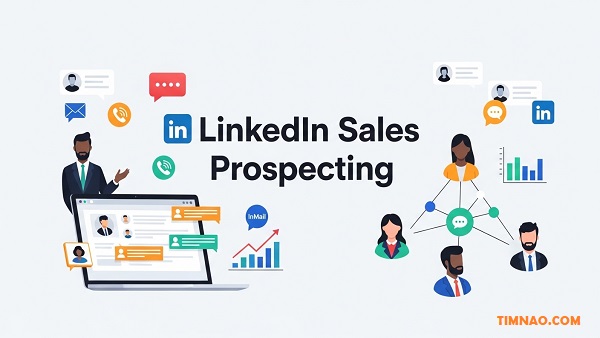
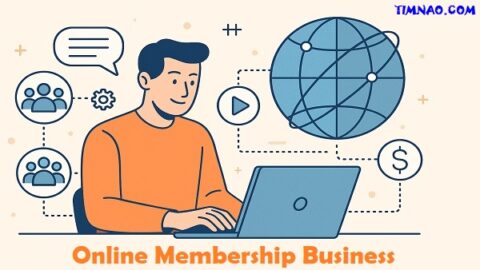


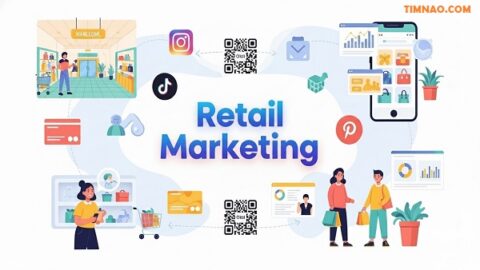

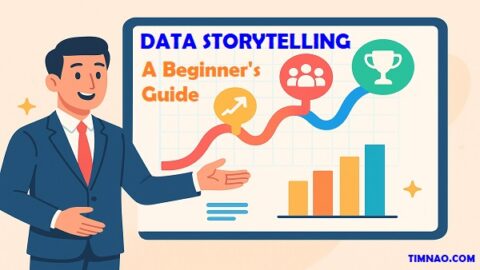
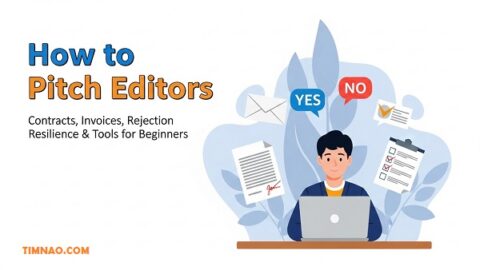

Practical advice that’s easy to implement. Much appreciated.
Thanks so much!!!
If some one needs to be updated with most recent technologies then he must be visit this website and be up to
date all the time.
Thanks for your positive feedback!!!